
219
3826

Start by being first! The RM059 and new case composition at Richard Mille

[The man and his watch: Yohan Blake and the first production RM059 to be sold]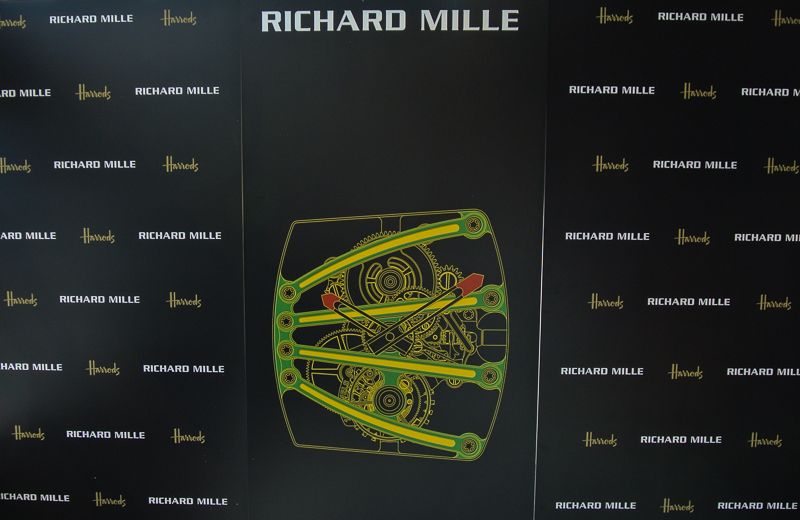
Seemed appropriate: for a shop whose colour is green, the green watch that is the RM059 was sold to a Harrods client! The first one to be available and with a few minor and subtle changes over the prototype I had seen at SIHH (http://richardmille.watchprosite.com/show-forumpost/fi-18/pi-5695643/ti-840853/s-0/). For the new lucky owner, a chance event that made it a little more special. In London, for only a few days was none other than Yohan Blake! It was a green and gold event! Gathered in the small covered balcony on the fourth floor of London’s most renowned department store, some of London’s press gathered to meet the racing machine that is Yohan Blake and see the racing machine that is strapped to his wrist (well, before he had to hand it over to the new owner).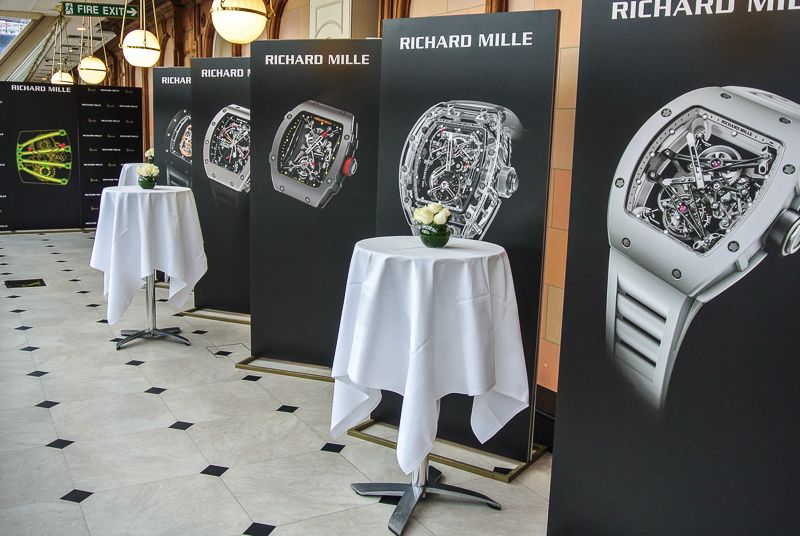
On London’s warmest day of the year, the covered balcony was perhaps (literally) the hottest place to be, sip some beverages, and view the latest Richard Mille limited series tourbillon on the wrist of the running star for whom it was designed. It was an ideal afternoon.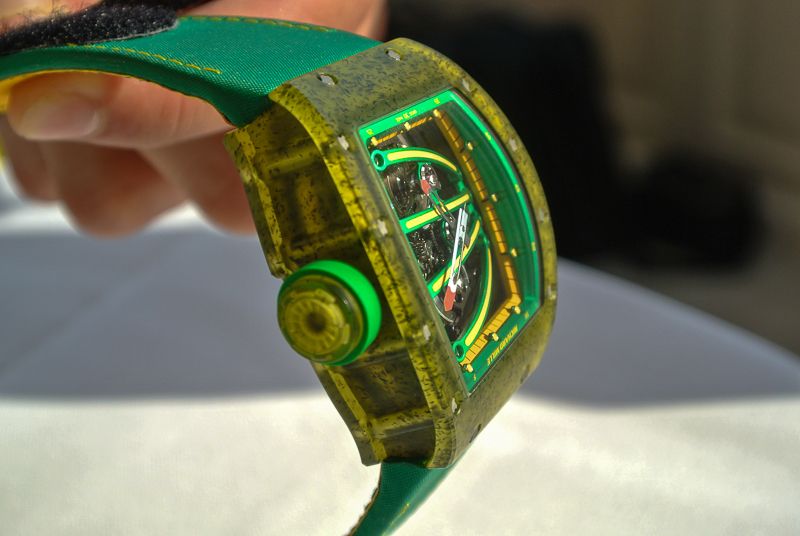
[The first production RM059 to be sold – well pre-sold – fully finished and with a new strap. The bridges are an aluminum alloy: composed of aluminum, magnesium, silicon and lead; the finishing is a mix of the new and the traditional! The green colouring is from oxidizing the aluminum with green crystallization that gives it the green vibrancy in the light. The yellow colour on the bridge is hand painted!]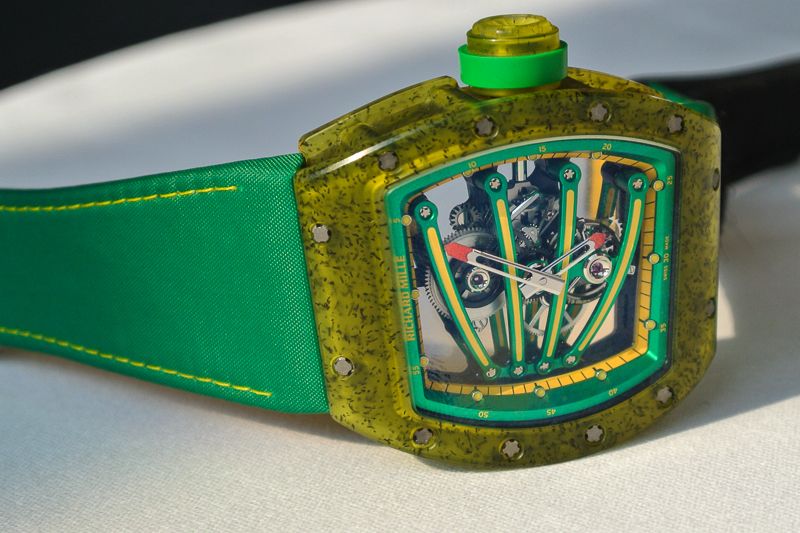
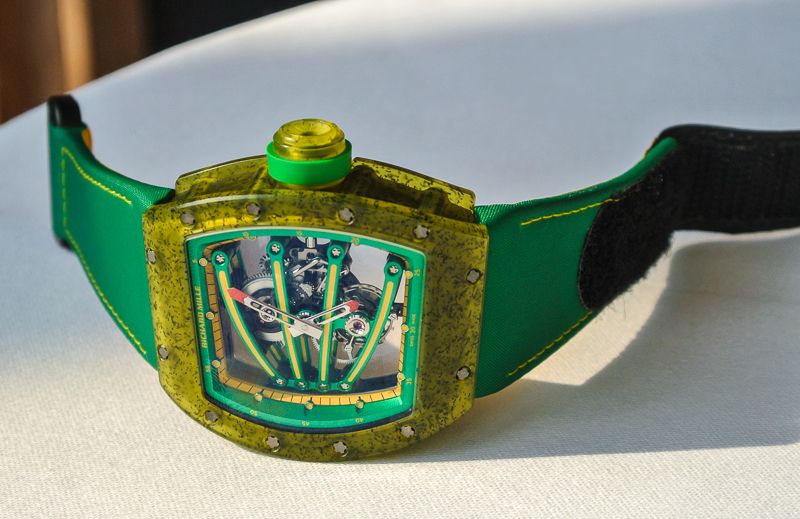
Over the last six months Richard has made a few small and subtle changes to the RM059. The most obvious difference is with the strap. A nylon, leather and Velcro strap, brightly coloured with green and yellow (or if you will allow me: gold), and a slightly more vibrant colouring on the bridges (again in the same colouring). The movement is now finished and I am often struck at how Richard combines new materials with the highest end haute horologerie. The case and plate materials might be new, but the actual movement parts themselves are quite traditional. Beating below the new material case and bridges is a traditionally made and finished tourbillon. Caught below the vibrant green and yellow anodized aluminum alloy bridges, the movement shimmered and gleamed, and was a joy to behold. However, apart from the fully finished movement, and the slight increased colour vibrancy, what is less obvious in the changes made since January lies unseen to basic observation.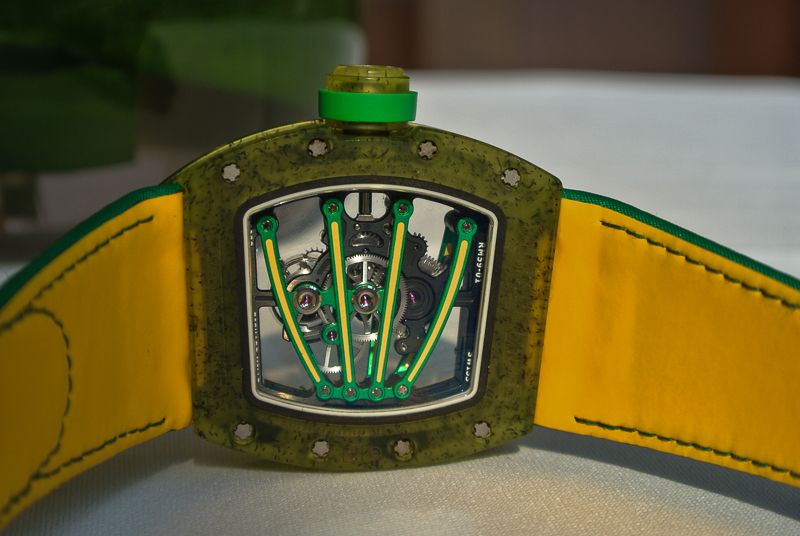
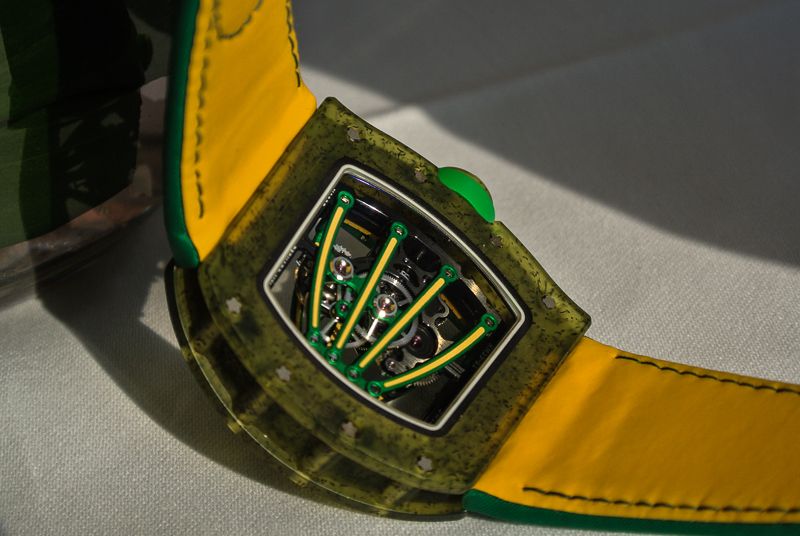
I was, coincidentally, recently in Les Breuleux (before the Harrods event) and was fortunate enough to see the first RM059’s being assembled and getting sent out to the dealers. As I talked to the watchmakers and micro-engineers at Richard Mille, I was shown some of the problems with the composite material cases and in particular the research that had gone into the RM059 case. 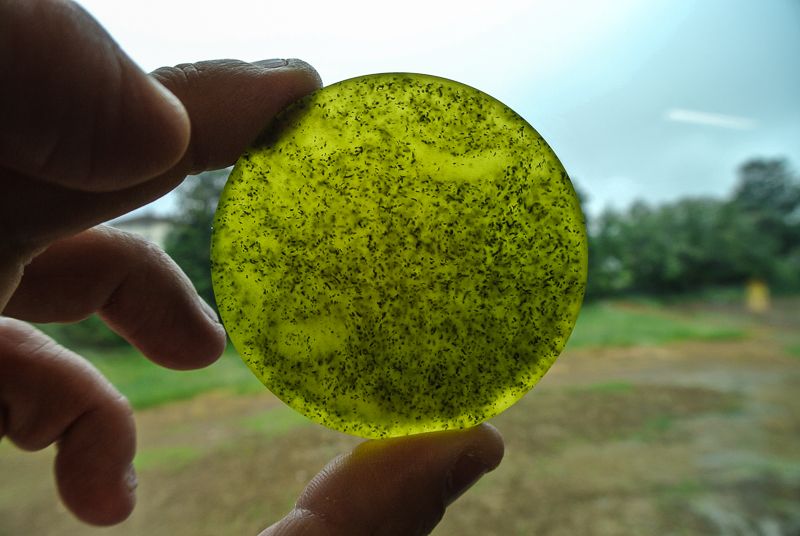
[The case composite material: polymer injected with carbon nanotubes]
Admittedly, (as a friend and Richard Mille enthusiast confided in me) you might think of the RM059 as a rather grown up “Ben 10” watch. (If you need a reference for this, I am guessing that somewhere on YouTube a video of the opening credits of “Ben10” can be found). It is green, appears to glow, and, to a certain extent, it molds to the wrist. And I rather suspect for the new owner it has that same: “cannot remove it from the wrist” attribute as well. The material is a composite of polymer resin and carbon nanotubes. The injected carbon nanotubes appear as the darker ‘flecks’ of material seemingly floating in the material. The polymer composite itself is actually trickier than it looks. As with other new materials that Richard has introduced: the carbon nanofibre, the aluminide SOMETHING, and the RM009 case metal, there is a considerable amount of research on the new material, the supplier, and how it will age and last. This is not a material picked at random.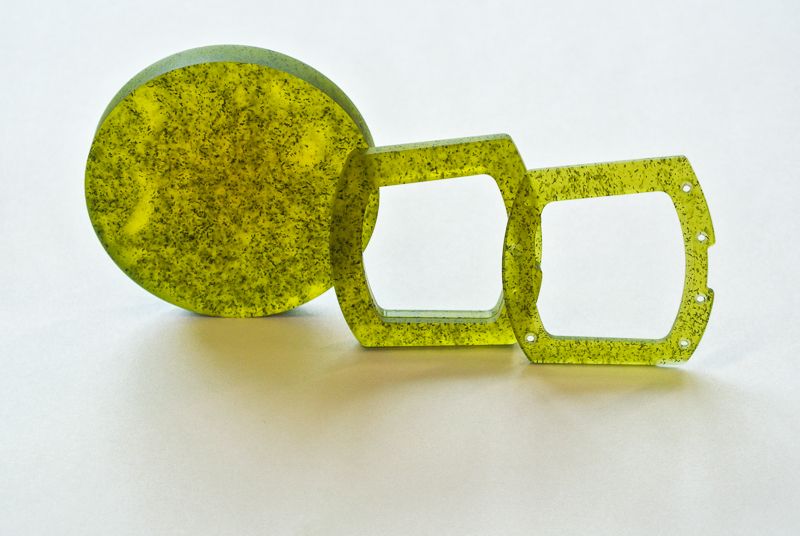
[The different stages case part manufacture: from solid block, to an intermediate stage, to the final polished and finished bezel]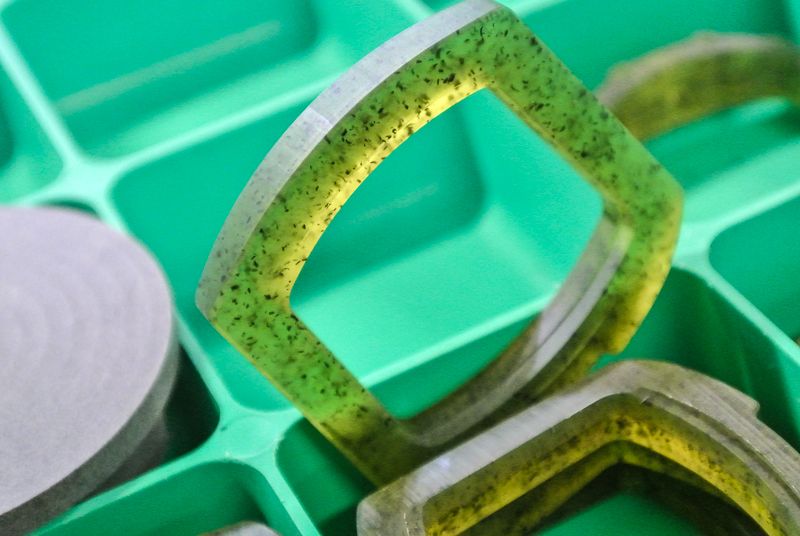
As a block of carbon injected polymer material, it is both strong and structurally rigid. The problems start as you begin to mill the material into the three-tiered curved structure that is the Richard Mille tonneau case shape. One of the elements that the case-makers at Richard Mille had not seen when they started out was how small variations in the composite can have markedly different effects once you arrive at the finished case elements (particularly for the back and the front bezels). Get the composite compound wrong and the whole bezel can warp even if the final article once finished, and according to the CNC readout, had been finished to the exact required dimensions. 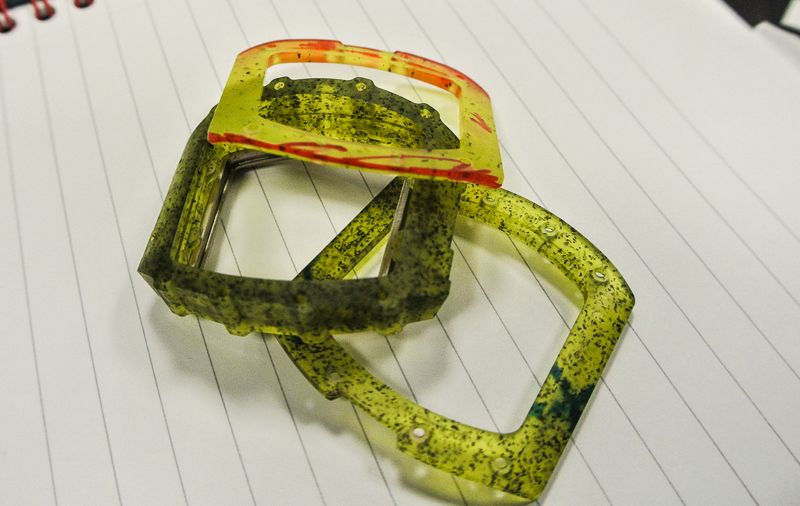

[The problems of getting the composite wrong: note the different colour (and therefore different composition) of the red-lined top bezel. After machining had been complete, the bezel warped to such a degree that it was nowhere near the curvature of the case. Case composition and curvature must be sufficiently accurate to meet a 1/100th millimeter tolerance between curved surfaces over all parts of the case: home.watchprosite.com
]
Richard then also had to think of internal structural rigidity for the watch, even with the composite at the right chemical compound. Hence, and as is usual for Richard, what appears a simple, is more complex than it appears. The RM059 case now comes with a titanium insert that has been machined to an exacting degree and slots directly into the case. The titanium insert actually fulfills a twofold purpose. The first is the internal structural rigidity of the case. The second is the element to which the movement bridges are fixed within the middle tier of the watchcase. The ability to manufacture case parts to such an exacting degree has come at considerable investment and cost in case manufacture on Richard’s part. The newly opened case manufacture (just down the road from Richard’s main workshops in Les Breuleux) has allowed complete control over the case manufacturing process. It is with this investment in new machining that Richard can now consider more complex watchcases.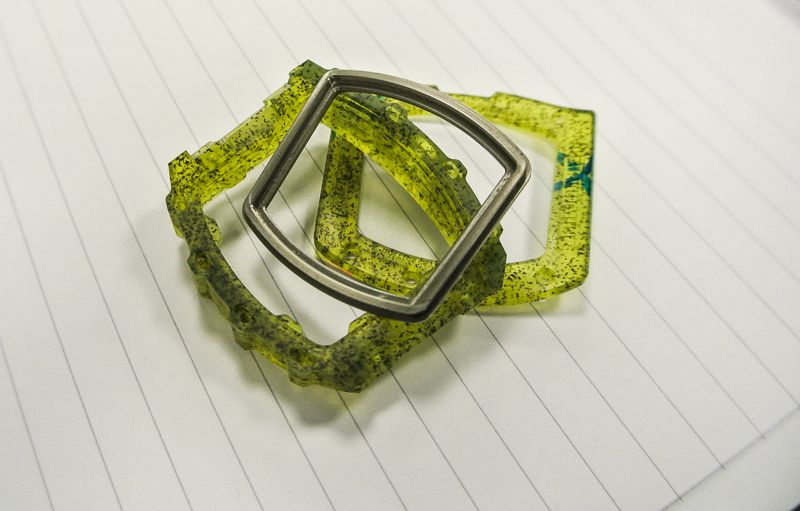
I had the chance to walk around the new case-making factory. It is state of the art in appearance, in the process by which it can manufacture precise case parts, and in the very precision with which it executes the machining task. All of this has allowed Richard to re-think how some of the cases are made and how to improve the process.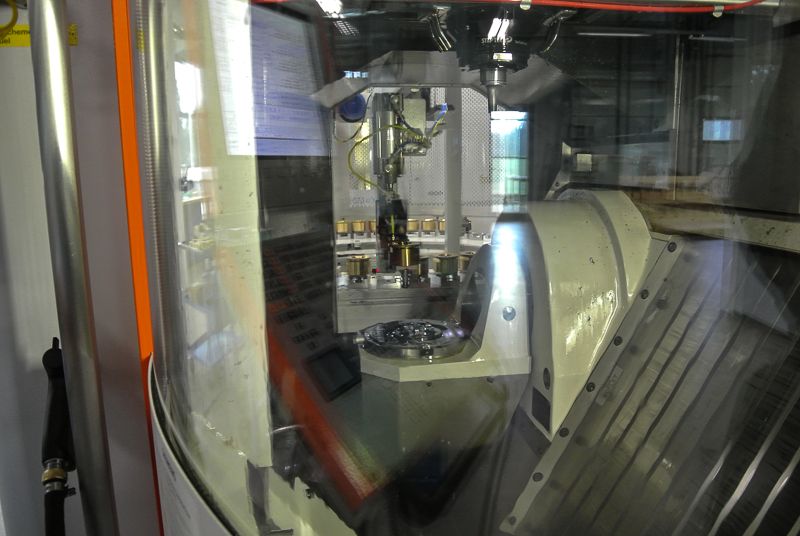
[The new state of the art case CNC machines at Richard Mille S.A.]
Richard Mille cases are some of the more complex (perhaps the most complex) in the industry. Whether it is the original tonneau shape (constructed out of three curved elements), or the round divers watch (with its 22 torque screws holding the case together), Richard’s watch cases are an art form in and of themselves. The diver watch cases continue to be made from titanium and/or gold. They have to be to withstand depth pressure. But the tonneau shaped watches, whether it be the RM011, RM035, RM055, or more recently the RM059, have been constructed to some degree using composite material.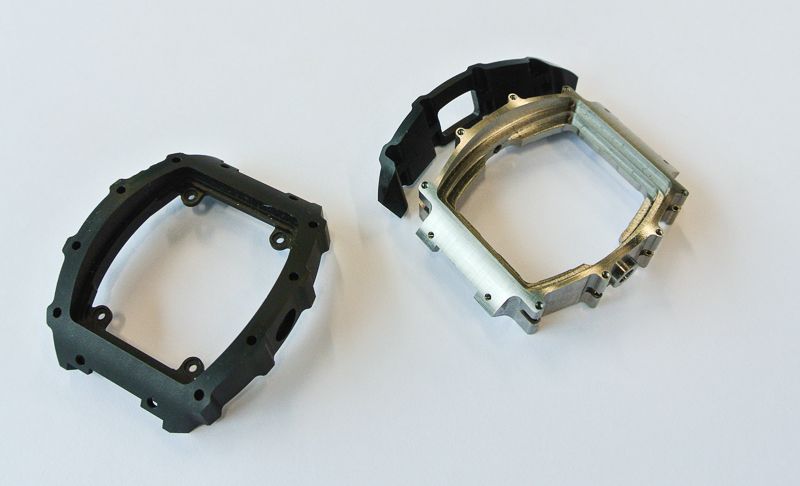
[The new composite case manufacture: requiring ever more complicated forms that exactly marry into the other for form an integrated case.]
Ever worried by the internal structural integrity of his watches, Richard had been aware that such structural integrity could be improved. In particular, for the models destined for sports use, such integrity should be improved. The opportunity arrived with Richard’s purpose built case making factory and the state of the art CNC machines. Richard now has the ability to cut exactly, complex shapes and forms, to within the required hundredth of a millimeter. The outcome is a new approach to casemaking that puts Richard and his state of the art new ‘toy’ (factory) at the forefront of what is possible (as usual!).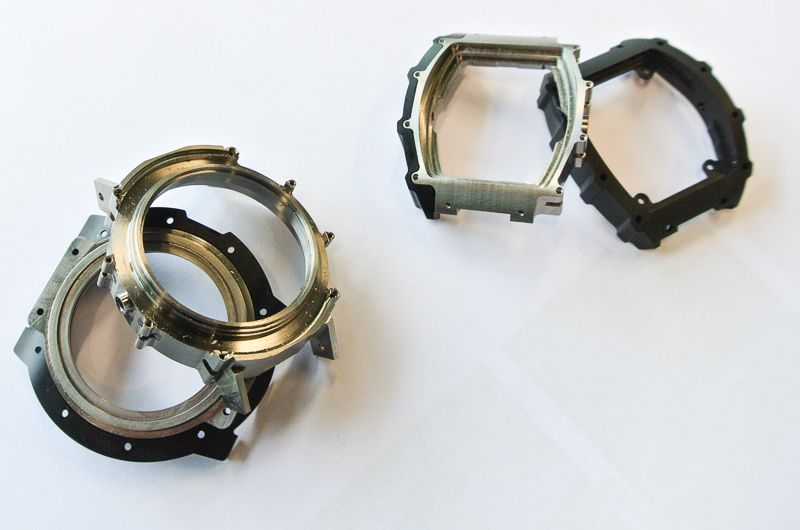
[The integrated case form is even being applied to the diver watch ase that is generally recognized as one of the more complex cases in watchmaking]
The idea now is to make a case within a case. One case fits exactly inside the other. The composite material is machined to an exacting shape, as is the inner structure of the titanium. Both fit exactly into and onto the other. What is left is a case that is structurally as rigid as it can be, but that the composite (that has other properties such as (non-reaction to skin) and the ability to absorb scratches and bumps, is on the outside.
The first watch to receive this new approach in case manufacture is the RM059, and given its role in the line up of limited edition watches it remains a unique sports tourbillon watch. Despite the very highest end haute horologerie in terms of the watch, its finish and its aesthetics, are so very different from anything else seen before. For a start, the colour and styling of the watch are instantly identifiable. The watch still retains the classic Richard Mille ‘time-only’ tourbillon that has essentially been in place since the RM001. That said the movement is now well known, with the same high level of finish as always. Finally, as all of the limited edition tourbillon watches, Richard requires that it be worn in the heat of competition: from the start gun to the finishing line. And once a fully fit Yohan Blake is back in competition, I am sure that the RM059 will grace the start line (along with the runner) and will be instantly identifiable as it stops other clocks at the finish. Personally looking forward to seeing that!
Andrew H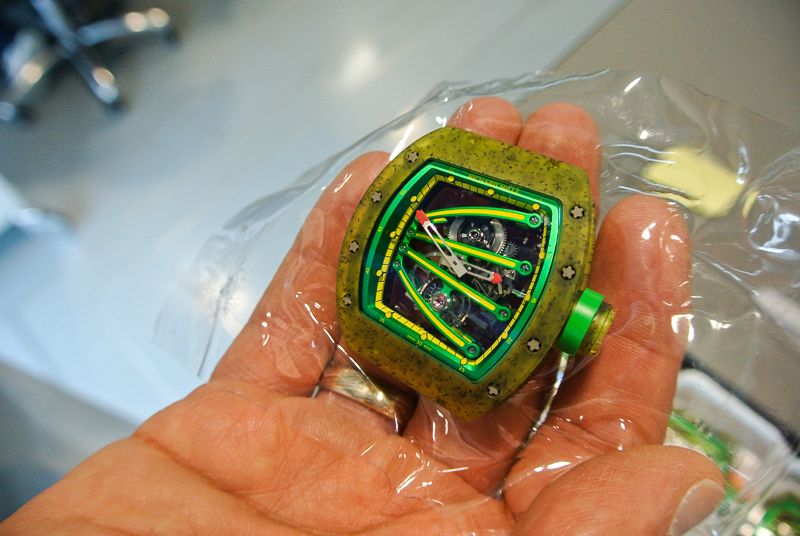
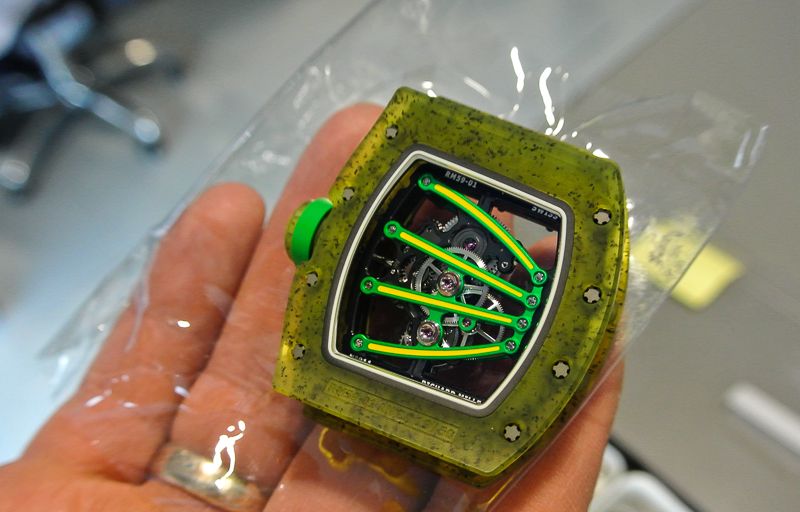
[From Richard Mille S.A. to the new owner at Harrods, via a very brief time on Yohan Blake’s wrist: the RM059]
===
To leave comments, please go to Andrew's original post in RM forum, richardmille.watchprosite.com
